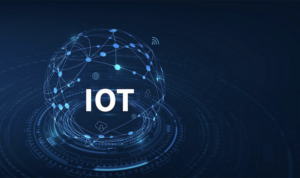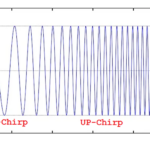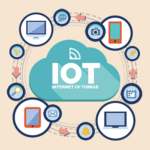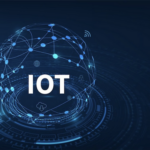There are nearly 15.14 billion Internet of Things (IoT) devices active so far this year. That number is expected to double to 29.42 billion by 2030. Examples include wearables, smart-home and office devices, as well as automotive, medical, and industrial devices. More than 90% are connected to one another or a Cloud platform.
Today, Cloud platforms are becoming essential to IoT operations. There are few devices capable of processing data locally without a remote server, or that rely on edge computing and fogs, but that’s rare.
Nevertheless, it can take time to decide on the ideal IoT solution for a product or business as there are several options. In this article, we’ll cover some top-rated commercial IoT platforms and discuss tips for choosing the best one to suit your needs.
What is IoT?
The Internet of Things is a distributed network of smart devices that collect and share data with one another and a central platform via the Internet. These devices are equipped with sensors and actuators for data collection, which is converted from analog to digital form using data acquisition systems and gateways.
 Often, basic analytics of the converted data is performed through edge computing. Otherwise, the data is transferred to a central platform for later processing, storage, and deep data analysis.
Often, basic analytics of the converted data is performed through edge computing. Otherwise, the data is transferred to a central platform for later processing, storage, and deep data analysis.
Examples of IoT systems include home automation systems, logistics tracking systems, robotics, wearable fitness devices, and the Industrial Internet of Things (IIoT).
A central platform can also be used to communicate messages between IoT devices. So, a device’s function might be interdependent or leverage operation through specific machine-to-machine communication.
Why use an IoT platform?
An IoT platform is an online service or software solution useful for the development, deployment, and management of IoT applications and devices. IoT devices require a platform for connectivity management, data management and analytics, device management, application development and integration, security and privacy, data visualization, user interface, scalability, and performance.
The architecture
The architecture of an IoT system typically consists of several layers or components that work together to enable the collection, processing, and communication of data. Most systems incorporate the following.
Perception layer: includes the IoT device or the “things” in the IoT system. Such devices could be sensor modules, actuators, or embedded systems. The sensors collect the environment data (such as temperature, humidity, motion, or light) while the actuators perform mechanical actions based on received commands.
Network layer: the connectivity infrastructure by which IoT devices communicate with one another, a central platform, and other components within the system. This layer includes communication protocols and technologies, such as Wi-Fi, Bluetooth, Zigbee, cellular networks, or other wireless communication technologies.
Data layer: manages the data generated by IoT devices, including data collection, storage, and management. Data may be stored locally on the IoT device, transmitted to a central hub or gateway, or sent to the Cloud server for processing and deep data analysis. There are several databases and data management systems used to log and organize the data.
Middleware layer: acts as a bridge between the perception and the application layers, providing services and protocols for data transmission, device management, and data communication between devices and applications. This layer handles data routing, security, and integration of different devices and protocols.
Application layer: responsible for processing, analyzing, and deriving insights from the IoT data to make decisions. It involves several applications, services, and interfaces that interact with users and other systems. The application layer comprises simple mobile apps and web interfaces or complex analytics platforms and AI systems.
Security and privacy layer: responsible for data encryption, user authentication, access control management, and other security mechanisms applied to ensure the integrity and confidentiality of IoT data. IoT systems require robust security measures to protect data and devices from unauthorized access, hacking, or tampering.
Business layer: focuses on the business aspects of the IoT system, such as defining the use cases, creating value propositions, and designing the overall business models. It assesses strategies, partnerships, and scalability.
The platforms
There are many ways IoT platforms are categorized and divided into distinct classes.
- Based on deployment, IoT platforms are classified as Cloud-based, on-premises, and hybrid.
- Based on functionality or specialty, IoT platforms are broadly classified as connectivity, application enablement platforms (AEPs), device management, data analytics, industry-specific, and edge-computing platforms.
How to select an IoT platform
Most IoT platforms offer similar features, which can make choosing the ideal one challenging. It’s important to do your homework before selecting a platform to ensure it best meets your needs.
Ask yourself:
- How will my product or business depend on an IoT platform?
- What are the exact IoT requirements for this product or business?
- What connectivity requirements are necessary…and available (this might include WiFi, Bluetooth, Cellular, Zigbee, or any other popular wireless solution)?
- What data analytics capabilities are required by my product or business?
- How fast and reliable is the connectivity with different IoT platforms?
- How much will I need to scale the network, today and over time?
- What security measures and features are available by different IoT platforms?
- What is your budget, and is there a platform with flexible pricing options?
The type of device, connectivity, data capabilities and analytics, and cost will ultimately be key factors in selecting a suitable IoT solution.
Top IoT platforms
Below are a few of the top commercial IoT platforms so far in 2023.
Amazon Web Services (AWS) IoT Core is a dependable and scalable platform that enables smooth and secure connectivity between IoT devices and the Cloud. It offers a collection of capabilities and services, simplifying the creation, deployment, and maintenance of IoT applications.
AWS IoT provides a secure messaging infrastructure for IoT devices to transmit and receive messages, supporting major protocols such as MQTT and HTTP, and allowing devices to connect and share data quickly. It also includes Device Shadow, a virtual version of each device’s state that lets them synchronize and interact even while offline.
Scalability is AWS IoT Core’s strongest suit. It can manage millions of devices and messages simultaneously, providing continuous communication and data flow. It also interfaces with other AWS services, including AWS Lambda, Amazon DynamoDB, and Amazon S3, allowing developers to create complex IoT applications that use these resources.
AWS IoT Core places a premium on security. It has strong authentication and authorization procedures, ensuring only trustworthy devices can connect and interact. Typical security features include Device certificates, IAM policies, and fine-grained access control rules. AWS also enables secure device provisioning and administration so devices are correctly authorized and configured.
The integration of AWS IoT Core with other AWS services simplifies data management and analytics. The data can be ingested and saved in services (such as Amazon Kinesis or Amazon S3) for further processing and analysis. AWS IoT Analytics offers extensive data processing capabilities, including filtering, transformation, and machine learning integration, so businesses can gain useful insights from their IoT data.
Cisco IoT Cloud is a sophisticated platform for securely connecting, managing, and analyzing IoT devices and data. The Cisco IoT Cloud is built on its broad networking experience and offers a comprehensive range of services and capabilities to enable end-to-end IoT deployments. The platform provides comprehensive connectivity management capabilities. It’s also compatible with a wide range of communication protocols and standards for the easy integration of various IoT devices.
Cisco’s networking architecture guarantees that devices and the Cloud communicate reliably and securely. One of Cisco IoT Cloud’s assets is its comprehensive device management capabilities. It enables businesses to effortlessly enroll, provision, and monitor their IoT devices on a large scale. The platform includes capabilities such as remote device configuration, firmware upgrades, and real-time diagnostics, making managing and maintaining IoT deployments easier. The platform further offers analytics and data processing capabilities, letting businesses gather, store, and analyze massive volumes of IoT data. It provides real-time and historical analytics, so users can obtain important insights, spot patterns, and make data-driven choices.
In terms of security, Cisco provides features such as secure device onboarding, data encryption, access management, and threat detection. These features assure IoT data and device confidentiality, integrity, and availability.
Google Cloud Platform (GCP) IoT Core is a comprehensive and scalable platform that lets businesses securely connect, manage, and analyze data from IoT devices. One of its top features is the interaction with other Google Cloud services. This means data can be integrated effortlessly into services like Google Cloud Pub/Sub and Google Cloud Storage, allowing for real-time processing, storage, and analysis.
GCP IoT Core also interfaces with Google Cloud Functions and Google Cloud Machine Learning Engine, enabling enhanced data processing and machine learning capabilities.
The platform provides a secure messaging infrastructure for IoT devices to deliver and receive data. It supports industry-standard protocols like MQTT and HTTP. It also offers Device Registry for device registration, maintenance, and status tracking.
For security, the platform has strong authentication and permission procedures to ensure that only authorized devices connect and share data. It further provides reciprocal authentication through device certificates, which ensures a safe connection between devices and the cloud.
Device administration functions include bulk device registration, configuration, and GCP IoT Core remote control. These capabilities make IoT deployment management and maintenance easier, allowing organizations to handle large fleets of devices more efficiently.
Microsoft Azure IoT Suite is a complete platform that allows businesses to design, implement, and manage scalable IoT applications. It reduces the difficulties of IoT development and allows seamless connection with other Azure services. In fact, the ability to integrate with other Azure services is a major benefit of Azure IoT Suite. It connects effortlessly with Azure IoT Hub, Azure Functions, Azure Logic Apps, and Azure Cosmos DB, allowing businesses to use additional services for data storage, processing, and application development.
One of Azure IoT Suite’s top features is its data processing and analytics capabilities. It works in tandem with Azure Stream Analytics, Azure Time Series Insights, and Azure Machine Learning to provide real-time and historical data analysis, predictive analytics, and machine learning on IoT data.
The platform provides extensive connection capabilities, supporting numerous protocols for device communication, including MQTT and HTTPS. It offers device provisioning, authentication, and secure connection, guaranteeing that devices and the Cloud communicate reliably and securely.
The security features include device authentication, encryption, access control, threat detection, and monitoring tools to assist organizations in identifying and responding to possible security issues. Azure IoT Suite also has powerful device management tools that enable businesses to register, monitor, and manage their IoT devices. For example, it includes device twin and direct means for device setup, firmware changes, and real-time monitoring.
Particle IoT is a versatile platform allowing developers to design, connect, and manage IoT devices and apps quickly and efficiently. It has a user-friendly interface and a range of functions. For example, the Particle Device Cloud enables seamless device connectivity and communication. The platform offers flexible connectivity choices, including Wi-Fi, cellular, and mesh networks.
Particle IoT is compatible with various hardware development kits, including microcontrollers and embedded modules. These kits provide pre-installed connections, sensors, and other components, allowing developers to concentrate on application development rather than hardware integration.
Over-the-air (OTA) firmware upgrades are one of Particle IoT’s distinguishing features. This feature enables devices to receive and install software updates remotely, ensuring devices always run the most recent firmware without user intervention. The platform also has device management features, such as device provisioning, remote setup, and real-time monitoring. The platform lets developers efficiently manage fleets of devices and quickly expand their IoT implementations.
For security, end-to-end encryption and safe authentication techniques are built into the platform, guaranteeing that data sent between devices and the cloud is secure. It also has access control and device-level permissions to help implement rigorous security procedures.
Thingworx IoT Platform offers a scalable infrastructure for seamless connectivity, analysis, and management of IoT devices. Its key attribute includes versatility, providing a comprehensive suite of tools and capabilities for the rapid development of unique IoT applications and solutions.
By harnessing the platform’s intuitive drag-and-drop interface, visual modeling tools, and pre-built IoT components, users can effortlessly design innovative applications.
The platform facilitates easy integration between IoT devices and web services with support for various connectivity options, such as MQTT and RESTful APIs. This ensures efficient data sharing, establishing a secure and reliable connection between devices and the cloud.
The platform uses authentication and access control methods for security, guaranteeing that only authorized devices and individuals can access and interact with IoT data. Additionally, data encryption and secure device provisioning safeguard data integrity and privacy.
Thingworx IoT has advanced data analytics and visualization features, empowering businesses to monitor, process, and report data in real time. This enables enterprises to gain insights from their IoT data, driving informed decision-making. Furthermore, the platform supports integration with third-party analytics tools, allowing enterprises to leverage their existing analytics infrastructure to its fullest potential.
Samsung ARTIK is an open, secure, and scalable IoT platform enabling businesses to design, implement, and manage IoT solutions quickly and efficiently. ARTIK offers a comprehensive collection of hardware, software, and services to suit the requirements of IoT applications.
The platform also supports a range of modules, boards, and gateways designed to meet the demands of various IoT applications. ARTIK modules are compact, energy-efficient, and simple to incorporate into devices. These boards have been designed for quick prototyping and development. ARTIK gateways offer a secure and scalable way to connect IoT devices to the Cloud.
The SDKs from ARTIK support various programming languages. The cloud platform from ARTIK offers a safe and scalable solution to store, manage, and analyze IoT data. The administration console allows centralized management of ARTIK devices and applications.
The platform provides security services to ensure a safe environment to connect, manage, and store IoT data.
ARTIK’s analytics services enable the collection, analysis, and visualization of IoT data. Machine learning (ML) services allow for the development of ML models that may be used to make predictions and choices based on IoT data.
Sigfox is a low-power, wide-area (LPWAN) network that allows users to connect small, battery-powered devices to the Internet. Sigfox devices can send small amounts of data over long distances, making them ideal for a range of IoT applications — such as asset tracking, smart city applications, and environmental monitoring.
Using Sigfox, it’s possible to connect devices anywhere in the world. The platform is specifically optimized for low power consumption. These devices can run for up to 10 years without a battery replacement and can communicate at low data rates (100 bits per second) at nominal costs. Pricing is based on the number of messages sent and the distance traveled.
Other platforms
A few other IoT platforms worth considering include Thales Voracity, Intel IoT, Zetta, WSO2 IoT Server, SparkFun Thing Dev, Exosite, Ayla Networks, MultiTech MultiConnect IQ, Kura, NodOn, and Tuya Smart.
You may also like:
Filed Under: IoT applications, Tutorials







Questions related to this article?
👉Ask and discuss on EDAboard.com and Electro-Tech-Online.com forums.
Tell Us What You Think!!
You must be logged in to post a comment.